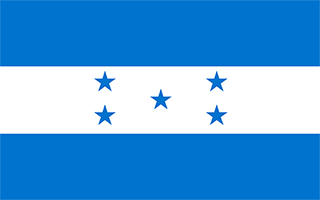Facts and Data
Webpages:
Official Unesco Page
Basis Data:
Unesco World heritage since: 1980
Size of heritage:
Coordinates:
Longitude: -88,867°
Latitude: 14,850°
Summary
Discovered in 1570 by Diego García de Palacio, the ruins of Copán, one of the most important sites of the Mayan civilization, were not excavated until the 19th century. The ruined citadel and imposing public squares reveal the three main stages of development before the city was abandoned in the early 10th century.
Location on Map
Show bigger map on Openstreetmap
Maya Site of Copan: A Window into Ancient Civilization
The Maya Site of Copan, located in the westernmost part of Honduras, is a UNESCO World Heritage site that offers a fascinating glimpse into the ancient Maya civilization. With its rich history and well-preserved ruins, Copan stands as a testament to the ingenuity and cultural achievements of the Maya people.
History
The history of Copan dates back to the 5th century AD when it was established as a small agricultural village. Over the centuries, it grew into a significant urban center and the capital of a powerful Maya kingdom. The city reached its peak during the 8th and 9th centuries AD, boasting a population of around 20,000 inhabitants.
Under the rule of influential kings such as Yax K'uk Mo' and 18 Rabbit, Copan flourished as a center of art, science, and political power. The city was renowned for its impressive architecture, intricate sculptures, and advanced knowledge of astronomy and mathematics.
However, by the 10th century AD, Copan experienced a decline, and the once-thriving city was abandoned. The reasons for its downfall remain a subject of debate among archaeologists, with theories ranging from environmental degradation to political instability.
Current State
Today, the Maya Site of Copan is a captivating archaeological site that attracts visitors from around the world. The ruins of Copan cover an area of approximately 30 square kilometers and include temples, palaces, ball courts, and residential areas.
One of the most remarkable features of Copan is its intricate stelae, or stone monuments, which depict the city's rulers and provide valuable insights into Maya history and culture. These stelae are adorned with intricate carvings and hieroglyphic inscriptions, offering a glimpse into the lives and achievements of the ancient Maya.
The Hieroglyphic Stairway, a monumental staircase with over 2,500 glyphs, is another highlight of Copan. It is considered one of the most important Maya hieroglyphic texts ever discovered, providing crucial information about the dynastic history of Copan.
Efforts to preserve and protect the Maya Site of Copan have been ongoing. The site is carefully maintained, and ongoing archaeological research continues to shed light on the mysteries of this ancient civilization. The Copan Museum, located near the site, houses a collection of artifacts and exhibits that further enhance visitors' understanding of the Maya culture.
Visiting the Maya Site of Copan is a truly immersive experience. As you explore the ruins, you can't help but be awed by the architectural achievements of the Maya people. The intricate carvings, the grand plazas, and the sense of history that permeates the site all contribute to a profound appreciation for the ancient Maya civilization.
In conclusion, the Maya Site of Copan in Honduras is a UNESCO World Heritage site that offers a captivating journey into the ancient Maya civilization. With its rich history, well-preserved ruins, and ongoing research, Copan continues to be a significant archaeological site that provides valuable insights into the achievements and cultural legacy of the Maya people.
Videos from the area
Videos provided by Youtube are under the copyright of their owners.


